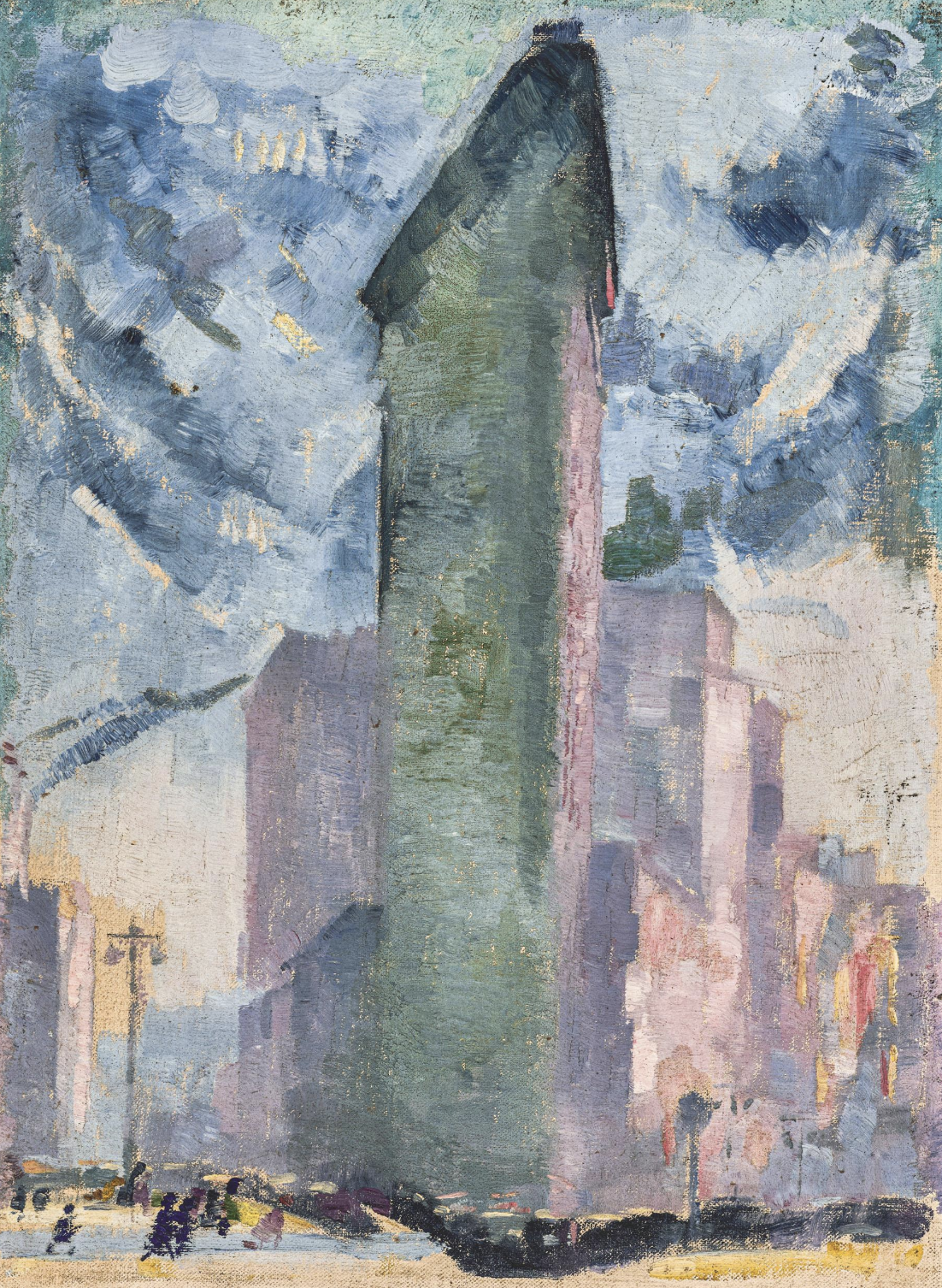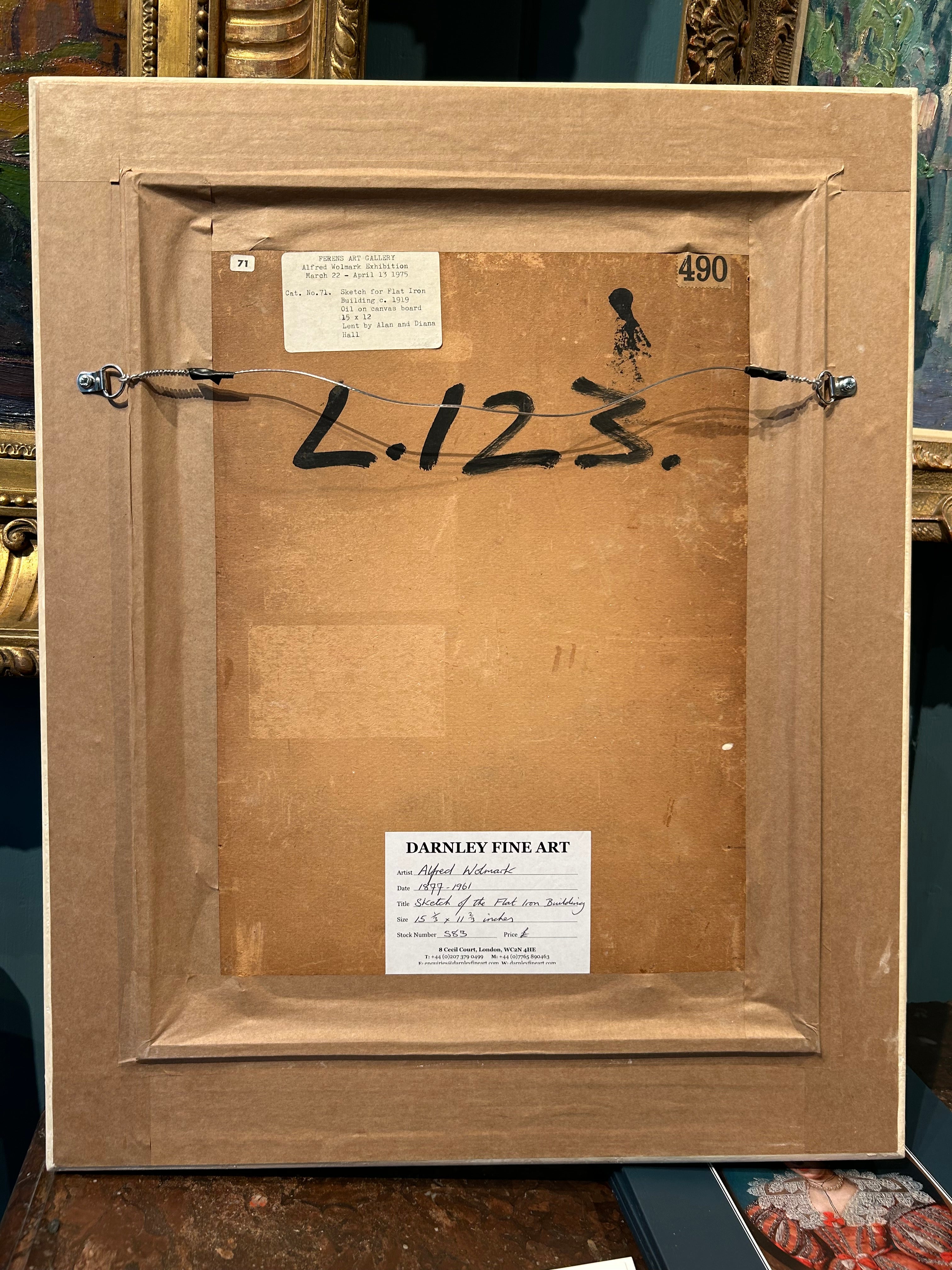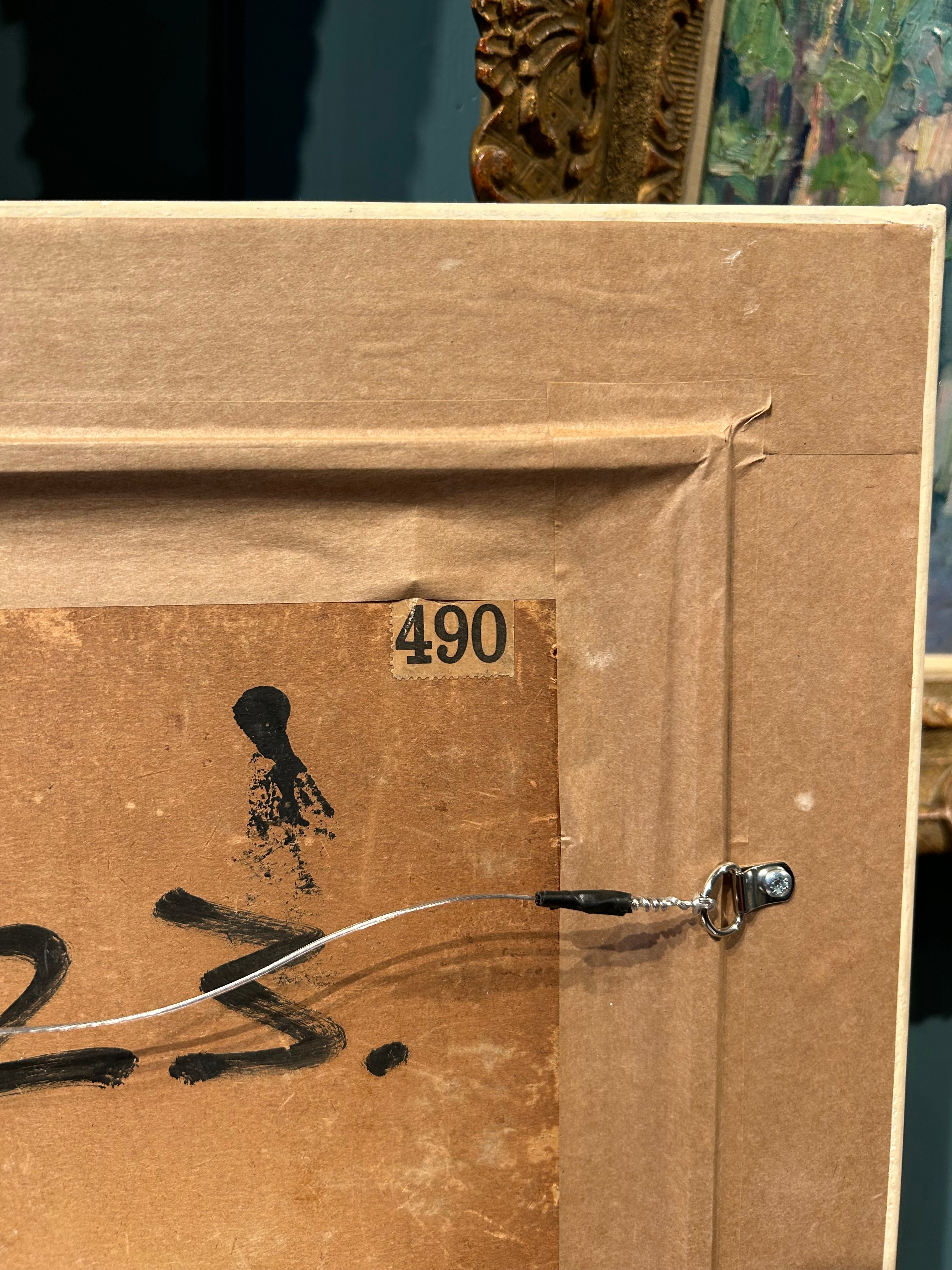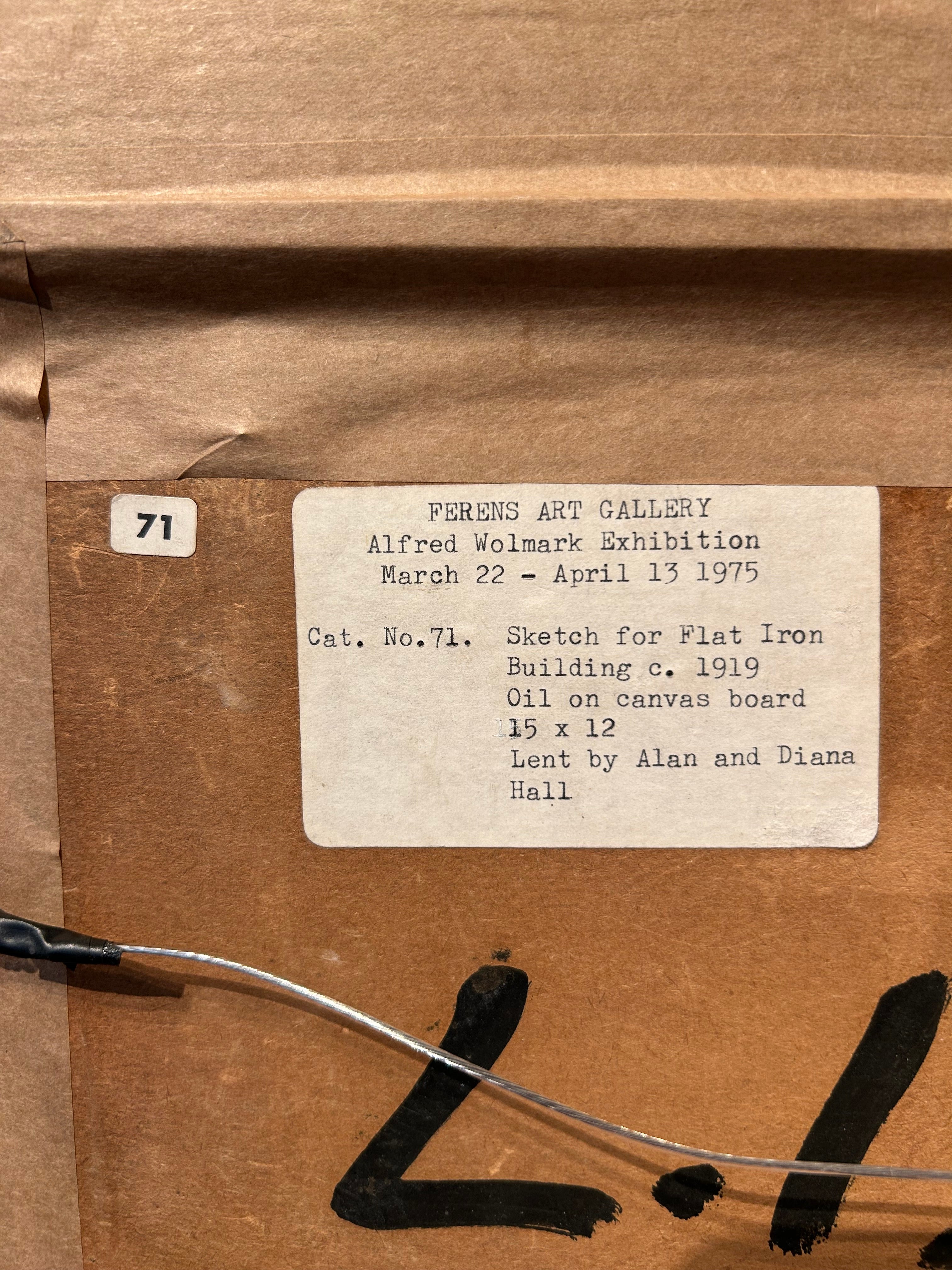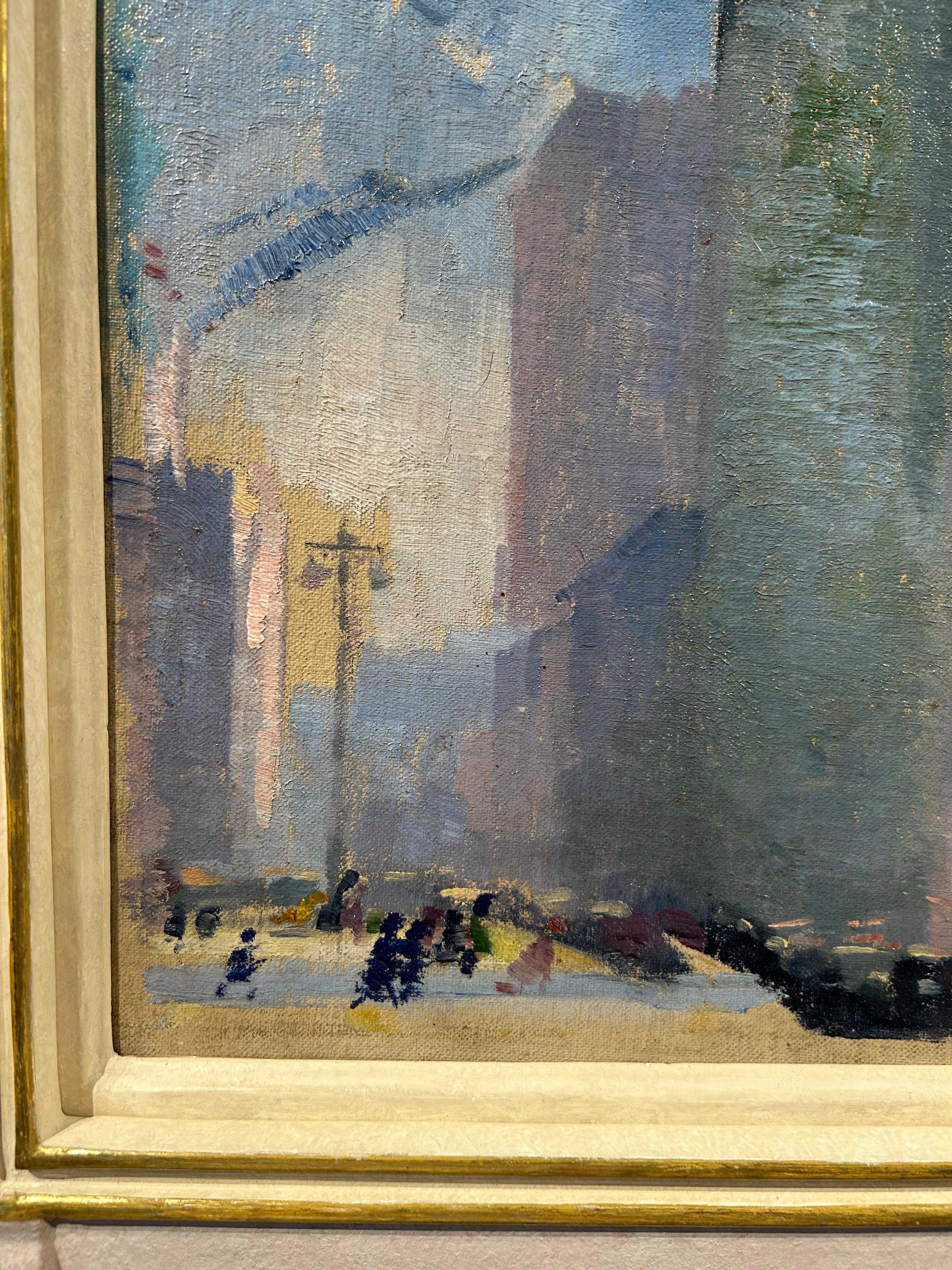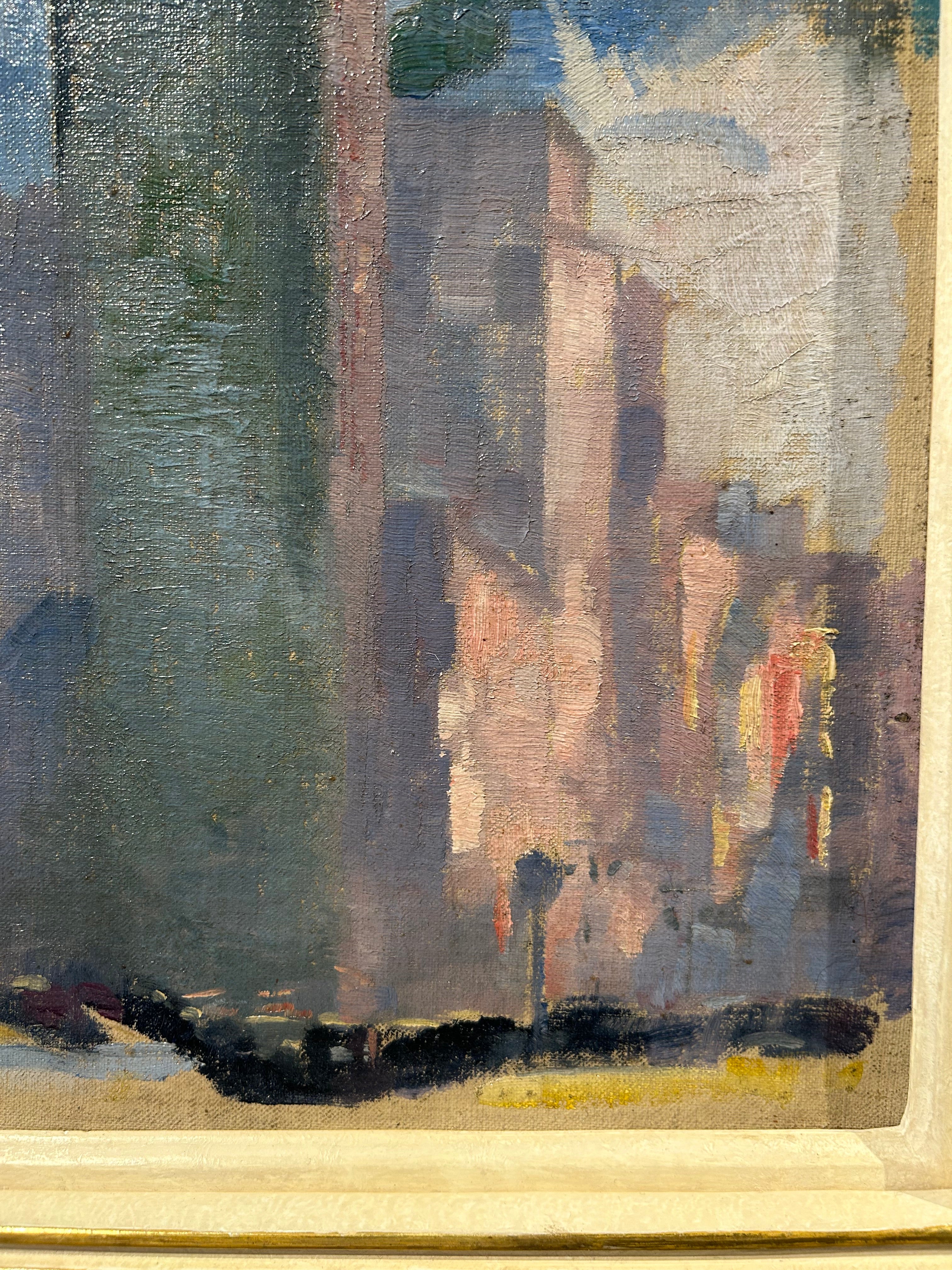
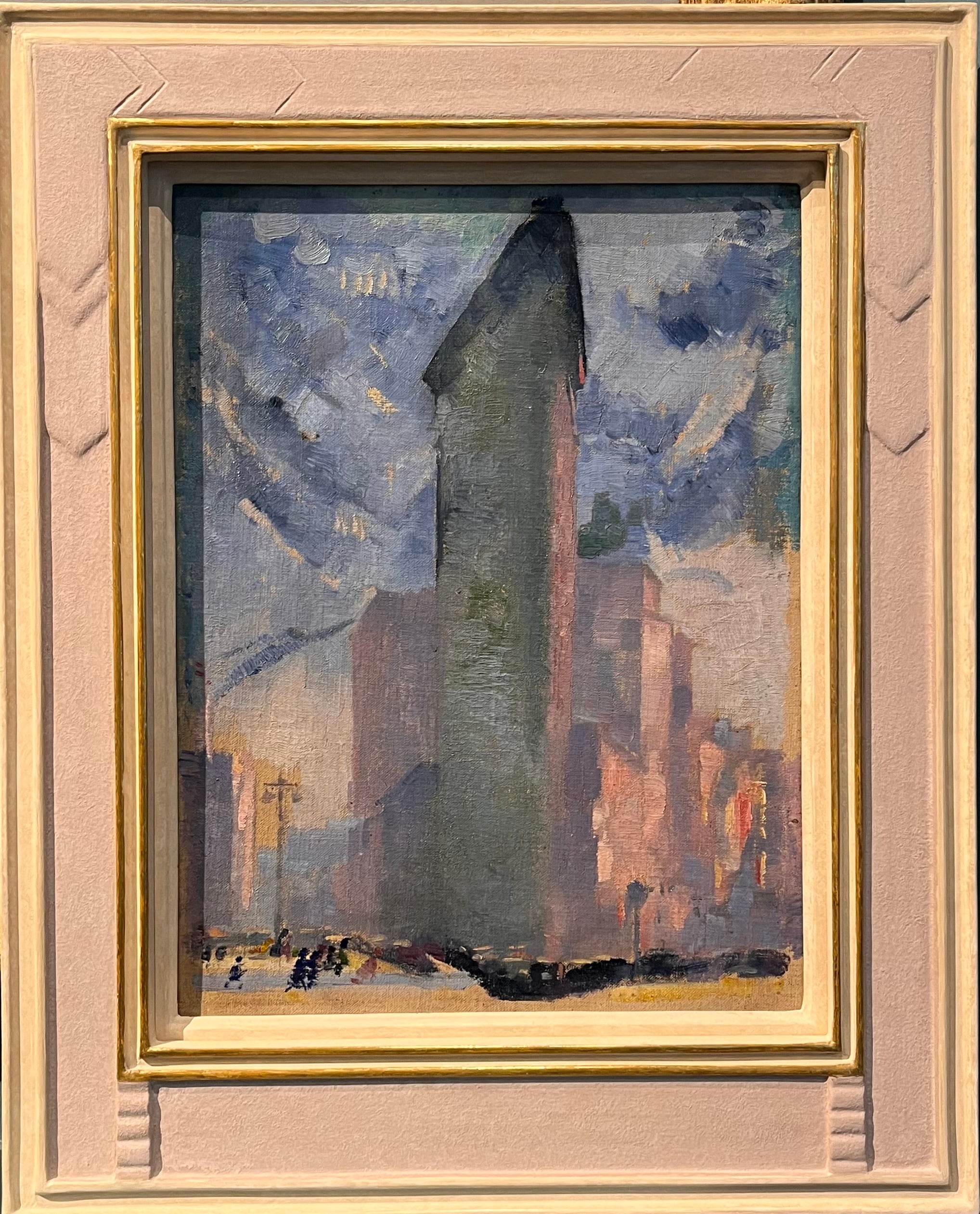
Alfred Wolmark
Sketch of the Flatiron Building
Oil on canvas board
Image size: 15 1/3 x 12 inches (39 x 30 cm)
Hand-carved contemporary-style frame
Exhibited
Ferens Art Gallery, Hull (March 1975)
Provenance
Collection of Diana Hall (daughter of the artist), New South Wales
Private Collection
Publications
Flatiron Building, New York c1920, private collection; illus. in Dickson, R. & MacDougall, S. (eds.), Rediscovering Wolmark: A Pioneer of British Modernism, Ben Uri Gallery, The London Jewish Museum of Art, London, 2004, p.46
Wolmark completed this sketch when he visited New York in 1919. It depicts the Flatiron Building situated on Broadway, which was the world’s tallest building from its construction in 1902 until 1908. He painted the Flatiron Building multiple times during his stay in America, with one such painting hanging in the New York office of the UK Mission to the United Nations. Therefore, this sketch would have been a crucial preliminary step in the creation of Wolmark’s finished pieces.
The sketch demonstrates what Wolmark was best known for - his pioneering use of colour and brushstroke. The sky is denoted by a variety of blue shades and short but broad brushstrokes, creating the impression of a clouded sky. The buildings in the background are painted in a mauve palette, giving the impression of a stormy sky reflecting off of glass and red brick. In the centre of the painting is the titular Flatiron Building, depicted as a towering monolith in a green palette that juxtaposes with the blue and purple it is set against. The colour combinations - green, blue, mauve - seem, in theory, to be bizarre choices, but it is impossible to maintain this belief when one sees the sketch for themself. Wolmark’s use of colour is masterful, and it becomes clear why he was afforded the moniker of ‘The Colour King’.
There is an air of spontaneity to the work, which is only furthered by the blurry figures rushing about in the bottom of the painting. Wolmark has captured modernity in a single work - a looming building that symbolises industrial and modern architecture, and the busy lives of those commuting to and from work just outside its doors.
Alfred Wolmark
Alfred Aaron Wolmark was born in 1877 to a Jewish family in Warsaw, who fled to Devon under threat of the horrific pogroms sweeping across Eastern Europe. Soon into living in England, the Wolmark family relocated to the Spitalfields area of London to live alongside other Jewish refugee families. Wolmark became a British citizen when he was 17.
In the 1890s, Wolmark began to study at the Royal Academy School and regularly exhibited there until 1936. He returned to Poland in 1903 to paint scenes associated with his Jewish identity, concentrating on elements of faith rather than persecution. Wolmark had his first solo exhibition in 1905 at the Bruton Galleries, followed by inclusion in the 1906 Jewish Art and Antiquities Exhibition in Whitechapel Art Gallery. This latter exhibition garnered a lot of attention for the young artist and marked the beginning of a fruitful partnership with the Whitechapel Art Gallery. During this time, Wolmark worked in a deeply traditional style featuring dramatic lighting inspired by Rembrandt’s chiaroscuro.
On his honeymoon to Brittany in 1911, Wolmark became enamored by modern French painting, and his works became heavily influenced by the post-impressionist and colourist movements. Wolmark became associated with the British Fauvist movement, and was known for pushing the boundaries of colour to extreme extents in comparison to his contemporaries. Despite his pioneering approach to colour and heavy use of impasto, which even put other artists off hanging their work next to his pieces at group shows, Wolmark continued to depict traditional subject matters and genres.
Just before the First World War, Wolmark became close friends with the sculptor Henri Gaudier-Brzeska - Wolmark painted portraits of Gaudier-Brzeska, and Gaudier-Brzeska created a bust of Wolmark. In fact, Wolmark was a well-known portraitist and painted for a number of prominent sitters, such as GK Chesterton, Thomas Hardy and Alduous Huxley. He also designed costumes and stages for Diaghilev ballets, stained glass windows for a church in Slough, book illustrations for Israel Zangwill’s works, and a set of decorative pottery - Wolmark, it seemed, refused to be constrained to a single medium. He exhibited at the Grafton Gallery during this period, and also began a long-lived partnership with the Ben Uri Art Society. Wolmark helped to found the Jewish Association of Arts and Sciences in 1915.
In 1919, Wolmark visited New York and painted many cityscapes, such as the one above. These works were exhibited at the Kevorkian Gallery to great success. Wolmark was a prolific exhibitor of his artworks - group shows included the Allied Artists Association, the International Society, and the 1911 Roger Fry Post-Impressionist exhibition in London. Despite this success, he was rejected from the London Group and the Royal Academy.
Wolmark was instrumental in the 1925 opening of the Ben Uri Gallery on Great Russell Street and acted as its Vice-President until 1956. He also taught at the Slade School of Fine Arts. In the era following the Second World War, Wolmark’s artistic experimentation began to dwindle, as did his reputation and acclaim.
Alfred Wolmark passed away in London in 1961, but experienced a revival of his works in the 1970s when his work was exhibited at the Fine Art Society and the Ferens Art Gallery. In 2004, the Ben Uri Gallery hosted a major retrospective of his works. Wolmark’s works can be found at the National Portrait Gallery, the Arts Council Collection, the Jerwood Collection, the Tate Gallery, and the Ben Uri Gallery. To this day, Wolmark is regarded as a pioneer of British modernism.

